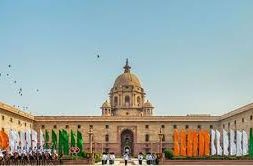
Now, that the last village in India has been electrified in alignment with the Prime Minister’s goal of lighting a bulb in even the most secluded villages in the country, the rest of us inhabiting concrete jungles are still trying to deal with piling electricity bills.
Most of us residing in India are habituated to do anything in our power to reduce the electricity bill that knocks on our doors every month. We browse for hours on the internet looking for ways to pay less for the electricity that we use, frantically trying to put unused appliances to rest. Now, that the last village in India has been electrified in alignment with the Prime Minister’s goal of lighting a bulb in even the most secluded villages in the country, the rest of us inhabiting concrete jungles are still trying to deal with piling electricity bills.The energy use per capita of India’s standing population of 132 crores, is currently 637.43 kg of oil equivalent, as per figures that were released in 2014. Reports released by the power ministry in January 2018 put the average hours of power supplied in a day to rural areas range from 11.5 in the hilly state of Mizoram to 17.72 in Uttar Pradesh to 24 hours in the states of Kerala, Gujarat and Tamil Nadu.
Surprisingly enough, electricity usage in India costs the lowest in Sikkim where, as per tariff orders dated between May 29 and May 30, 2017, in the lowest slab of billed electricity, power costs Rs 1.1 per unit. Mizoram follows closely with a cost of Rs 3.70 per KWH of domestic consumption.Figures dated 2018 put the electricity coverage in India at 82.53 per cent with an installed capacity of 340.53 GW. For the aforementioned figure, 81.9 per cent accounts for fossil energy while 15.3 per cent accounts for renewable energy. In March of this year, executives of India Energy Exchange, the country’s biggest electricity exchange claimed that the country’s daily average spot electricity price has nearly doubled over the last one month and is close to Rs 5 per unit.













